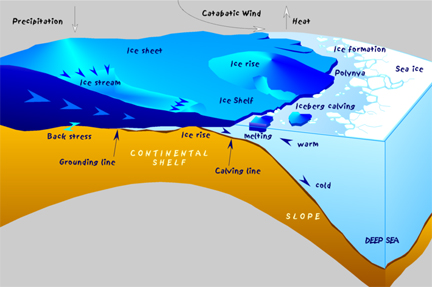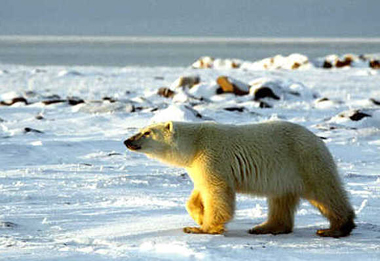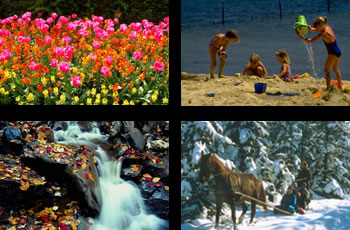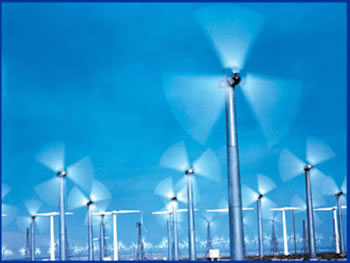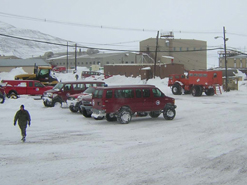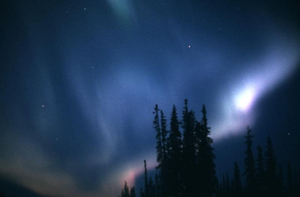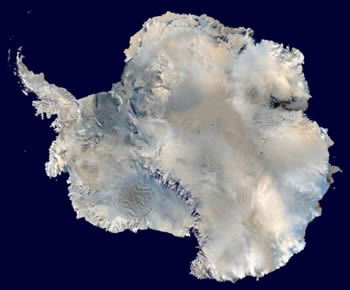Click on image for full size
Found in Wikipedia Commons - Source is Hannes Grobe at the Alfred Wegener Institute for Polar and Marine Research, Bremerhaven, Germany
Antarctic Weather
Antarctica, home to the South Pole, is very cold! In fact, Antarctica is colder than even the Arctic! Temperatures as low as -129 degrees F (-89 degrees C) have been recorded, and in the interior, near the South Pole, the average temperature is only -58 degrees F (-50 degrees C). Even in the summer the temperature rarely goes above -22 degrees F (-30 degrees C).There are a few reasons why Antarctica is so cold. First, Antarctica is a land mass, so a lot of the continent’s land does not have the benefit of being surrounded by ocean water (which tends to warm things up). Second, the average elevation in Antarctica is very high—about 8500 feet— which means lower surface temperatures. Third, Antarctica absorbs very little solar radiation throughout the year. During winter (March 22 throughout September 22) the sun doesn’t rise above the horizon at all because of the Earth’s tilt, so the whole continent stays dark!
Antarctica has also been called the windiest continent on Earth! There is a constant stream of cold air moving from the interior toward the continent’s coast. Because the air in these currents is so cold, it is very dense, and the winds tend to flow along the surface of the land. In some places, where land features act as a funnel, the wind grows even stronger and is called a Catabatic wind, which can be very strong. One of these places, Cape Dennison, is one of the windiest places on Earth—the average windspeed is more than 50 mph, and winds as high as 200 mph have been recorded.
With all the ice and snow covering it, many people assume that Antarctica gets a lot of precipitation, but actually the opposite is true. The annual precipitation in Antarctica is so low that Antarctica is really a desert, and in fact the interior parts of the continent get less precipitation every year than the Sahara dessert!
What does all this mean for us? It means that Antarctica may be the most inhospitable place on Earth for humans, and that it’s been a very difficult place to explore and study!


